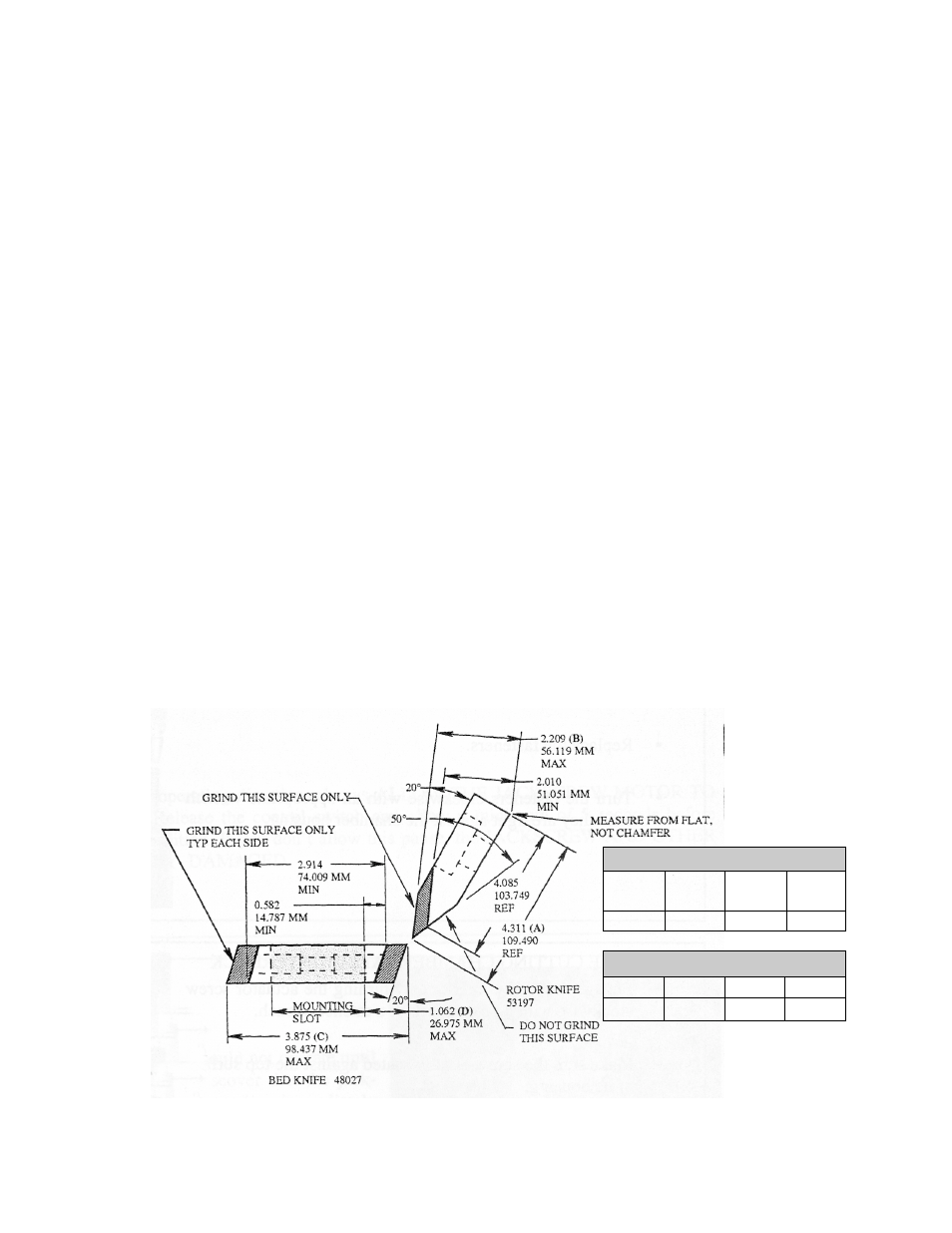9 sharpening the knives – AEC Colortronic MSH Series 2039 User Manual
Page 33

C Series Granulators
Maintenance
33 of 53
5-9 Sharpening the Knives
Under normal operating use, the cutting edge of the knives will eventually become dulled,
resulting in reduced cutting efficiency. The blunt knives may either be re-ground to restore
the cutting edge, or replaced with new knives when regrinding is not possible.
Note: Minimum dimensions given for the rotor knife and bed knife cannot be
combined simultaneously to produce a cutting combination. Use the grinding
chart in Figure 6 on page 33 to find out what combinations will work together.
Rotor Knife Sharpening
The rotor knife can be re-sharpened to the diagram below. The three knives must be
sharpened to within 0.076 mm (0.003”) of each other. Greater dimensional variations will
cause difficulty when setting the knife gap and create other serious complications.
When sharpening, it is not harmful to allow a few small nicks to remain in the cutting edge.
Grinding the cutting edge until perfectly clean can sometimes be wasteful.
Do not install rotor knives that are smaller than the minimum dimension shown, because the
fasteners that secure these knives will interfere with the cutting circle. If the rotor cannot turn,
the bed knives will be damaged.
Bed Knife Sharpening
Each bed knife is provided with two cutting edges. When the exposed edges become blunt,
the knives can be turned and repositioned to present the new cutting edges. When re-
sharpening is necessary, refer to the diagram below.
It is not necessary to grind bed knives to the closely matched tolerance of rotor knives. As
with rotor knives, small nicks in the cutting edges will not seriously affect knife cutting
efficiency. Bed knives smaller than the minimum dimensions shown must be replaced along
with the fasteners that secure them.
Figure 5: Knife Sharpening Specifications
Rotor Knife
A. New
A Min
B New
B Min
4.311
4.085
2.209
2.010
Bed Knife
C New
C Min
D New
D Min
3.875
2.914
1.062
0.582
